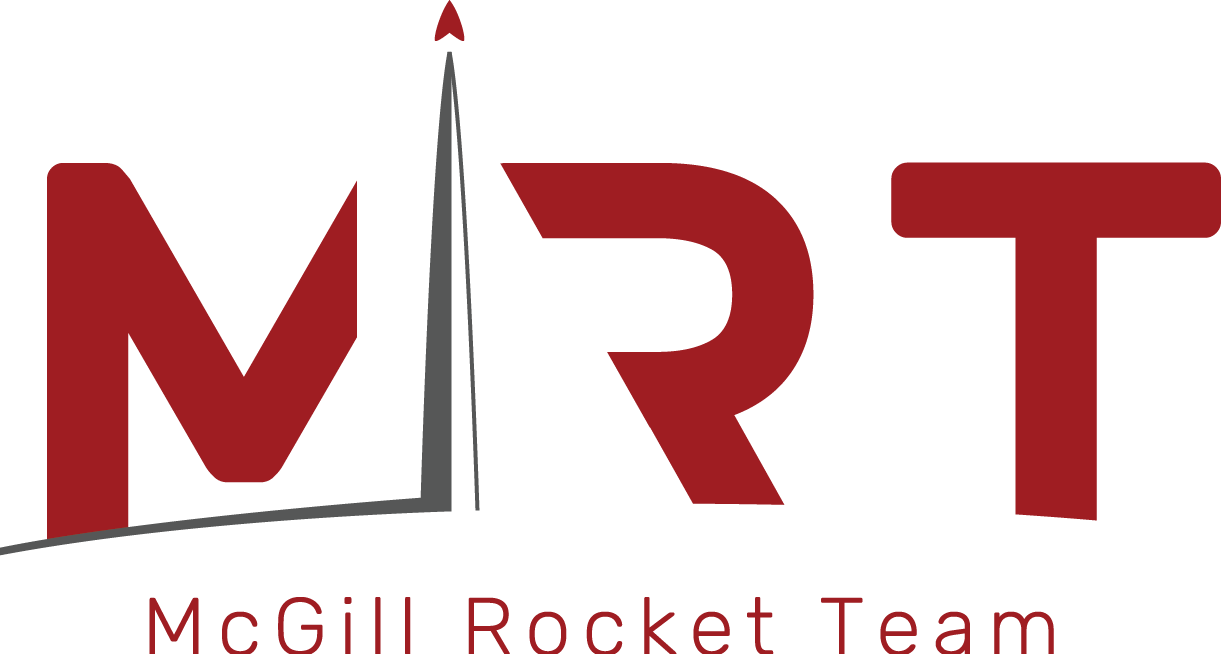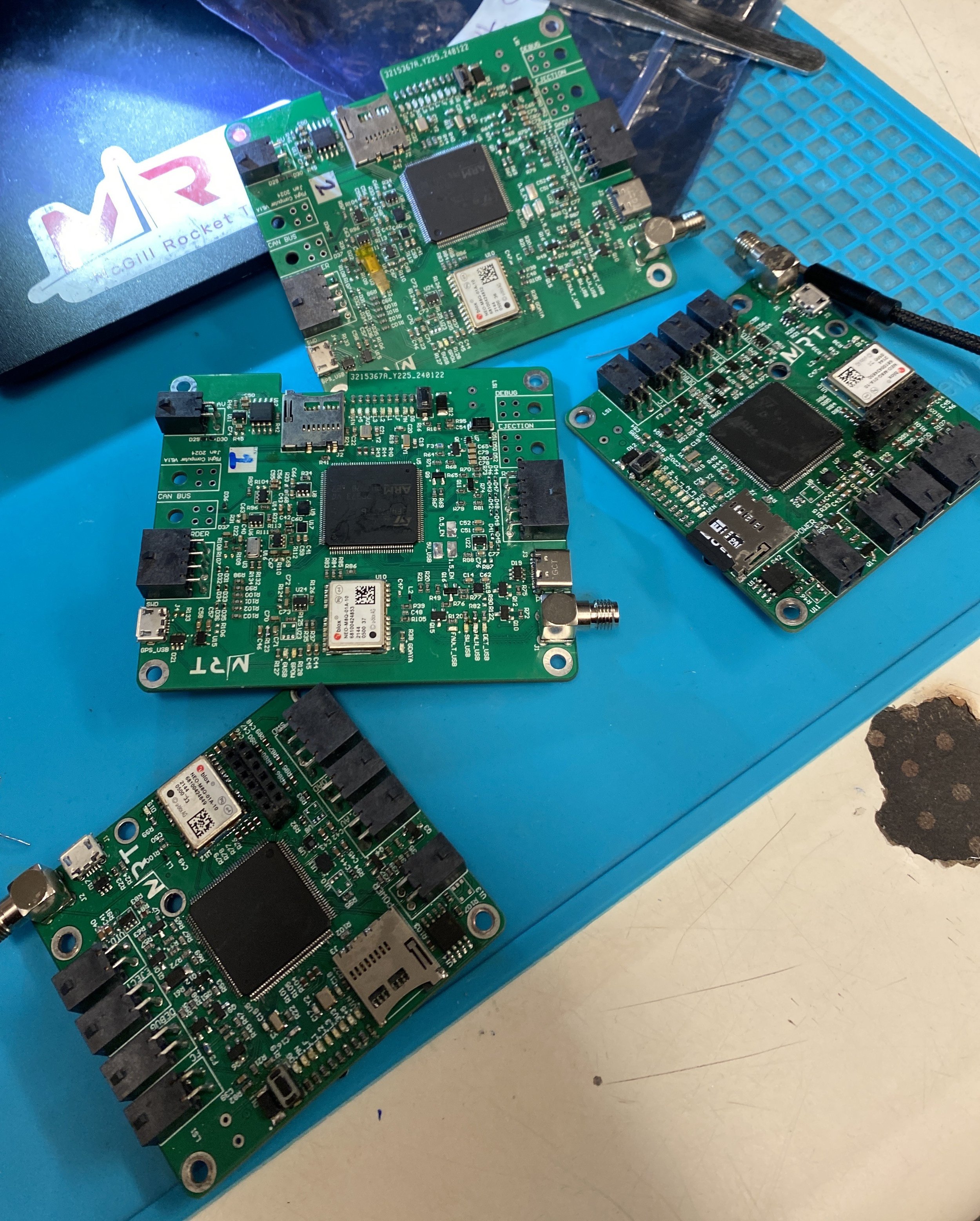
Avionics Project List
AV1: Antennas
Description
In order to transmit and receive using our radios, we require a good pair of antennas for turning our signal into electromagnetic waves. To meet the requirements for our next rocket, Ancalagon, we will be increasing our effective range to 20km by creating bigger and better antennas as well as more sophisticated, compact PCB antennas to be mounted on the rocket.
Members on this project will be able to get hands-on experience with designing, simulating, building and testing using industry standard software and equipment. This year’s objective is to scale up our existing ground infrastructure to reach greater distances. As such, those willing to make mechanical designs to be built for such antennas are more than welcome. The new flight computer antennas will also include PCB trace antennas. So, members who will work on these projects will also be able to learn the required software.
AV2: Radios
Description
The radio system is responsible for the communication between the rocket and the ground station. To monitor the rocket’s status and control its behavior, information is sent and received through the various radios linking the rocket and the ground station. With our rocket now going higher than we’ve ever launched one, a more robust radio system must be implemented to ensure constant communication between the ground and the rocket. Range testing conditions must also be adapted to account for the greater range and we will need to ensure everything works to near perfection as this subsystem is flight critical.
Members on this project will be able to work both on hardware and software with our two main projects: a software revamp of the current radios system and a student research and designed (SRAD) radio. The software revamp involves rewriting the entirety of the radios’ code, implementing new drivers, and installing a query system. The SRAD radio deals with circuit and PCB design around a LoRa module. Members will have the chance to create and debug hardware, software, as well as participate in a number of validation and integration tests to evaluate the radio performance.
AV3: Flight Computer Software
Description
In combination with Flight Computer (FC) hardware, the FC Software project forms the basis of the central command center of the rocket. The system collects data from various sensors and controls actions in the propulsion, ejection, and ground station systems. The FC Software project architects and implements the computer code that goes on the FC. This year, our focus is on re-architecting the system for concurrent programming and improved efficiency. We're also implementing robust dev-ops practices, including unit testing, code formatting, and comprehensive documentation. This initiative provides an excellent opportunity to learn industry-standard practices in a collaborative environment.
As a member of the FC Software project, you'll be writing real, flight-critical code using C/C++ and possibly Assembly. You'll develop low-level device drivers and interrupt handlers, implement efficient algorithms for real-time data processing, and work on a real-time operating system (RTOS) for precise timing control. Joining our project offers unique experiences you won't come across in most university classes!
AV4: Flight Computer Hardware
Description
The Flight Computer (FC) system is analogous to the human nervous system: a central command center that controls actions and gathers data through a network of peripheral devices and sensors. The FC Hardware project designs the electronic hardware that controls, monitors, and integrates the other subsystems of the rocket. For this design cycle, the goal is to develop the 7th generation of the FC system. In addition to overcoming the new engineering challenges presented by a rocket flying higher than ever, FC Hardware is preparing to move towards a new, modular architecture. The to-do and R&D lists are extensive, so now is a great time to join the FC Hardware project!
As a member of this project, you will help develop the hardware for the FC system through extensive prototyping and designing of various printed circuit boards (PCB). These tasks will involve theoretical research and development with practical testing and debugging. You will develop skills in research, circuit design and simulation, PCB manufacturing, and hardware debugging! These skills will make you stand out as a candidate for research opportunities, internships, and jobs.
AV5: Ground Station User Interface
Description
The ground station graphical user interface (GS GUI) is a system that provides a user-friendly UI to interface with our rocket systems. The GS GUI allows the team to receive and transmit data from different computers located in or around the rocket. As a result, The GS GUI must be able to process large quantities of data at high sampling rates from various sources. The GS GUI also saves all recorded flight data for future analysis. Among other things, the UI of the GS GUI allows the team to monitor and graph sensor readings from the rocket to ensure all systems are functioning as expected.
As a member of this project, you might be involved in:
The creation of new UI elements using React.js
Implementing new data processing algorithms
Creating new REST APIs to communicate between different parts of GS GUI
Important OOP design decisions
Adding support for new communication protocols and devices
To summarize, members of this project will be exposed to industrially-important facets of modern software development most similar to the roles of full-stack or backend developer at most companies.
AV6: Flight Computer Simulator
Description
The flight computer simulator project is essential to predict the behavior of the rocket and to thoroughly test the flight computers. Integrated into our ground station application, the simulator can be configured with various parameters to determine the trajectory, the apogee, and the landing zone of the rocket. Because the flight computer software and hardware are extremely complex and flight-critical systems, we use a software and hardware in-the-loop simulator to catch any problem that may arise.
In this project, you will develop the GUI aspect of the simulator so that it can be used with ease. You will send simulated data to the flight computer software, and simulate various sensors of the flight computer hardware to check if they react properly in-flight.
AV7: Motorized Antenna at Ground Station (MAGS)
Description
To improve the performance of our radios/antennas systems, directional antennas are often used on the ground. These types of antennas improve signal reception but need to be pointed in the direction of the rocket. At high altitude, the rocket is very hard to see and correctly pointing antennas by hand is like finding a needle in a haystack. The goal of this project is to build a motorized mount for the antenna, which will point directional antennas at the rocket automatically by calculating the direction of arrival (DOA) of radio waves.
As a member of this project, you will help in the design of the motor controllers, the electrical system, the control algorithms, and the mechanical mount.. You will also be involved in the manufacturing and testing of all the mechanical, electrical, and software components of the project.
AV8: Solar Panel Power Supply
Description
In an effort to make the MRT a little greener, we are looking to replace the generator responsible for powering the ground station with an SRAD Student Researched and Developed (SRAD) solar panel. This will involve research in the workings of photovoltaic (PV) cells, and training in the following skills: selecting, soldering, and assembling the required components. It will also involve acquiring silicon cells, tabbing wire, glass, and back sheets. A small-scale pilot project will first be conducted to assess its efficiency before commencing work on a full scale solar panel to completely replace the on-site generator with a more sustainable alternative.



















